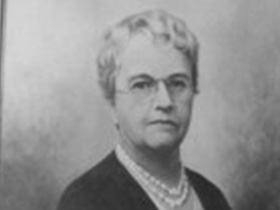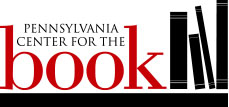You are here

1/15/1873 - 3/15/1940
Public Health Nurse Anna B. Heldman was known as The Angel of the Hill for her efforts in Pittsburgh.
Born in Castle Shannon, Pennsylvania, on January 15, 1873, Anna Heldman was a community nurse who served at the Irene Kaufmann Settlement in Pittsburgh’s Hill District. Heldman had an extensive career of public service and nursing that began when she was just twenty years old. Nicknamed "The Angel of the Hill District" by those that knew her, Heldman established a visiting nursing program, baby clinics, prenatal nursing services, and the Children’s Welfare Division of the local Department of Health. Heldman died on March 15, 1940.
Anna Barbara Heldman was born on January 15, 1873, in Castle Shannon, Pennsylvania. Heldman had felt called to the profession of nursing from an early age. She would spend her life devoted to public service in multiple ways.
At only 20 years old, Heldman found employment as a practical nurse at Allegheny Hospital, despite having no formal training or experience in the field of nursing. This would soon change, as Heldman enrolled in South Side Hospital’s Training School for Nurses where she was awarded credit for her years of work at Allegheny Hospital. On April 8, 1897, Heldman graduated from nursing school and volunteered to serve in the United States Army’s Medical Department as a nurse during the Spanish-American War. Her work in the Army took her to Florida, Georgia, and Cuba, where she was paid at a low rate.
After returning home from service, Heldman worked as a private duty nurse assisting individuals with long-term care needs. In 1902, she decided she would put her nursing skills and desire to help others into practice. She found a position at the Columbian School and Settlement in Pittsburgh’s Hill District, which eventually became known as the Irene Kauffman Settlement (IKS). At the time Heldman began her work as a community nurse, the spread of tuberculosis and typhoid skyrocketed. Increased immigration led to overcrowding and a lack of basic living necessities in certain areas, which only amplified the spread of these diseases.
IKS successfully assisted the community in the Hill District with Heldman gaining the trust of the neighborhood’s residents. Heldman was fluent in multiple languages, which allowed her to speak with a multitude of immigrants. Learning Yiddish was especially useful because she was able to connect with the large Jewish population in the area. Heldman not only ran the settlement, but she was often on the front lines in the streets with her black nurse’s satchel.
By 1917, Heldman had become Director of the Personal Service Department at the IKS. She continued to have direct contact with Hill District residents. However, her work was directed at the larger community. During the influenza outbreak of 1918, Heldman led the staff at IKS and nursed over one thousand people.
Heldman was nicknamed “The Angel of the Hill District” by those in and around Pittsburgh for her nursing and for her innovative contributions to the public’s health. She set up several programs including a visiting nurses service, baby clinics, and prenatal nursing services. Heldman also implemented a program to ensure children in schools would receive proper medical checkups, which was an early form of the Children’s Welfare Division of Pittsburgh.
After serving the community for many years, Heldman died at the age of 67 on March 15, 1940, having never married or had children. The Irene Kauffman Settlement was later renamed the Anna B. Heldman Community Center, and the city of Pittsburgh also renamed a street in the Hill District after Heldman.
- Bates, Barbara. Bargaining for Life: A Social History of Tuberculosis, 1876-1938. Philadelphia, PA, University of Pennsylvania Press, 1992.
- Brem, Ralph. "'Mother of Hill' Guardian Angel For Teeming Swarms of Slums." Pittsburgh Press, 13 May 1962, sec.2, p.1.
- Buechel, Kathleen W. A Gift of Belief: Philanthropy and the Forging of Pittsburgh. E-book. University of Pittsburgh Press, 2021.
- "Miss Anna Heldman Completes Thirty Years of Social Work." Pittsburgh Post-Gazette, 11 Jan. 1933, p. 22. ProQuest, https://www.proquest.com/historical-newspapers/january-11-1933-page-22/docview/1854037267.
- "Miss Heldman Is a Pioneer Social Worker." Pittsburgh Post-Gazette, 24 Feb. 1931, p. 11. ProQuest, https://www-proquest.com/historical-newspapers/february-24-1931-page-11-22/docview/1853951094.
- “Miss Heldman Wills Fund to Continue Her Work.” Pittsburgh Post-Gazette, 13 Apr. 1940, p. 7. ProQuest, https://www-proquest.com/historical-newspapers/april-13-1940-page-7-24/docview/1854292299.
- Moore, Stephanie. “Anna Barbara Heldman.” Literary and Cultural Heritage Maps of Pennsylvania. University Park, PA: The Pennsylvania State University, Spring 2010. Superseded Spring 2022, Pennsylvania Center for the Book. http://web.archive.org/web/20220707201029/https://pabook.libraries.psu.edu/literary-cultural-heritage-map-pa/bios/Heldman__Anna.
- "News About Nursing." The American Journal of Nursing, vol. 39, no. 9, 1939, pp. 1040-1054.
- "Obituaries." The American Journal of Nursing, vol. 40, no. 5, 1940, pp. 607-610.
- Richman, Hyman. “Life on Pittsburgh’s Hill: Some Views and Values of Jews Who Lived There Before the 1940s.” Western Pennsylvania History, vol. 74, no. 1, pp. 10-19, Spring 1991. https://journals.psu.edu/wph/article/view/4242/4059.
- Selavan, Ida Cohen. "Angel in Hell-with-the-Lid-off." The American Journal of Nursing, vol. 80, no. 11, 1980, pp. 2064-2066.
- Starsky, Lorraine. “Three Extraordinary Pittsburgh Women.” Pittsburgh Post-Gazette. 25 Oct. 2020, https://www.post-gazette.com/opinion/Op-Ed/2020/10/25/Stories-of-Three-Extraordinary-Pittsburgh-Women-to-Mark-the-International-Year-of-the-Nurse-and-Midwife/stories/202010250002.
- Zawoysky, Mary. "The Irene Kaufmann Settlement." Western Pennsylvania History, vol. 59, no. 1, 1976, pp. 115-117.
Photo Credit: "Portait of Anna Heldman." Photograph. Licensed under Fair Use. Cropped to 4x3. Source: Online Resource. Pittsburgh-Post Gazette, December 2014.
